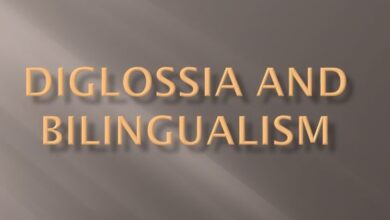How many language families are there/meaning/characteristic
Linguistic or language family
A linguistic family is a set of languages that derive from a common ancestor or “father.” Languages that share a significant number of features in phonology, morphology, and syntax belong to the same linguistic family. The subdivisions of a linguistic family are called “branches.” How many language families are there?
English, along with most of the main languages of Europe, belongs to the Indo-European family.
The number of language families in the world
“It is estimated that there are more than 250 linguistic families established in the world and more than 6800 different languages, many of which are threatened or in danger of disappearing” (Keith Brown and Sarah Ogilvie, Concise Encyclopedia of Languages of the World, Elsevier Science, 2008).
The size of a linguistic family
“The number of languages that make up a linguistic family varies greatly. The largest African family, the Niger-Congolese, is made up of approximately 1000 languages and a similar number of dialects. Even so, there are many languages that do not seem to be related to any other. These families made up of only one language are known as isolated languages. The American continent is one of the most linguistically diverse; the number of Native American linguistic families amounts to more than 70, including more than 30 of these languages ”(Zdeněk Salzmann, Language, Culture, and Society: An Introduction to Linguistic Anthropology, Westview Press, 2007). How many language families are there?
Geographical distribution
The geographical distribution of families is the reflection of the historical evolution of their speakers. Thus most of the large families of languages seem to have expanded thanks to agricultural or technological “revolutions” of some other kind. The Neolithic Revolution caused the expansion of Afro-Asian languages in Africa and the Middle East, Sino-Tibetan languages in the Far East and, according to Renfrew’s theory, the expansion of Indo-European languages in Western Eurasia.
The improvement of navigation techniques allowed the speakers of Austronesian Languages to expand from the Island of Taiwan throughout Oceania, even reaching Madagascar in front of the African continent. European imperialism brought to America Indo – European languages and many areas of Africa, Oceania, and to a lesser extent Asia. Apparently, the use of iron and other technologies would have allowed the Niger-Congo Languages to prevail in Africa by displacing the speakers of other now small families such as the Nile-Saharan Languages or the Joisanan Languages.
At present, the two major linguistic families, by a number of speakers, Indo-European languages and Sino-Tibetan languages together, add up to a number of speakers equivalent to 75% of humanity. While among the indigenous languages of America, for example, many language families barely exceed the few thousand speakers. How many language families are there?
There are many languages in the world, organized in a series of families, that is, groups that share their own origin and elements. Among them are:
How many Language families are there with and characteristics
Indo-European languages
- One of the largest language families in the world, made up of more than 150, which are spoken by 3.2 billion people in the world (45% of the total population). It is estimated that all come from an Indo-European language that originated around 3000 BC. C. This family is divided into:
- Anatolio. Dead language.
- Greek-Armenian. Where do the Greek and Armenian come from?
- Thracian-Dacian-Albanian women. Only the last survives.
- Italo-Celts. From where the Latin arose and, therefore, the Romance languages.
- Germanic. Where do the German, English, and Nordic languages come from?
- Balto-Eslavas. Where do the Baltic languages like Lithuanian come from, and Slavic languages like Russian, Czech or Polish.
- Indoiranias. Where the languages of the Middle East and Central Asia come from, such as Persian, Hindu-Urdu, Pakistani, Pashtu, Nepali, Kurdish or Romani, among others.
- Tocharian. Dead and little-known languages.
Dravidian languages
A set of 26 languages from central and southern India and Ceylon (Sri Lanka). It is divided into southern, southcentral, central, and northern. None of them are thought to be related to the rest of the languages. How many language families are there?
Japonic languages
These would descend from a proto-Japanese language, such as eastern and western Japanese, or the Ryukyuan languages (from the Ryukyu Islands in the south of the country).
Sino-Tibetan languages
There are more than 250 languages, spoken from North India (West), Taiwan (South East), China (North) to the Malay Peninsula (South). Its gigantic variety of languages is spoken in China, Thailand, Laos, Bhutan, Nepal, Bangladesh, Pakistan, and India.
Niger-Congo languages
Niger-Congolese languages encompass 1,400 different languages and nearly 400 million speakers. They are classified into Niger-Congo A and Niger-Congo B, and it is one of the main families of African languages. How many language families are there?
Mayan languages
Also called Mayans, they come from ancient Mesoamerica and are spoken by almost 5 million speakers between Guatemala, Mexico, Belize, and Honduras. It’s divided in:
Huastecan languages
Huasteco and Chicomucelteco, the latter already dead.
Yucatecan language
The most widely spoken in Mexico.
Western Mayan language
Like the Cholano, Tzeltalano and Kanjobalano.
Eastern Mayan language
Like the quiché-mameano, the mameano, quichean and poqom.
How many languages are there in the world?
It is estimated that there are between 3 thousand and 7 thousand languages on the planet, but it is really impossible to determine the exact number since many are difficult to differentiate from each other.
Some estimates warn of the disappearance of around half of the languages currently spoken, in favor of the majority languages, estimated for the year 2100.
Most spoken languages in the world
The main languages of the world in relation to their number of native speakers are:
- Chinese. Around 1,200 million speakers.
- Spanish. Around 400 million people.
- Hindi. 380 million speakers among the 23 existing variants.
- English. 360 million native speakers and 500 million second-language speakers.
- Arab. 250 million speakers worldwide.
How many language families are there?
